Connecting the hood in the bathroom to the light switch: analysis of popular schemes and detailed instructions
Ventilation in the bathroom is not only desirable, but also a necessary condition for a comfortable stay. It provides dryness, prevents the growth of mold foci, eliminates unpleasant odors, if we are talking about a combined bathroom.
Intra-house ventilation shafts do not always cope with metabolic processes, so air circulation is difficult. Forced hood can be arranged by installing a fan in the room.
Often it is practiced to connect the hood in the bathroom to the light switch - so you can combine the use of lighting and a fan. Consider the best schemes suitable for self-installation, and dwell in more detail on the process of selection and installation of electrical equipment.
The content of the article:
Schemes for connecting the hood to the switch
After the purchase exhaust fan to bathroom the question arises about its installation and connection to the home electrical network. So, there are many ways to turn on a fan, but two schemes are recognized as expedient: connecting an exhaust fan through a single-key switch and pairing it with a two-key device. Each of the schemes can be performed in two versions, which depend on the type of exhaust device - with or without a timer.
As an alternative method, we present an autonomous adjustment performed using a separate switch. It is used less often, since it is much more convenient to use a 2-key controller than two 1-key ones, and installation is easier and faster.
Option # 1 - via single-key switch
First, let's talk about how you can connect an extractor hood in the bathroom at the same time as a switch. We offer two simple solutions suitable for forced ventilation in the bathroom - both in a separate and in the combined bathroom.
In the first case, we will use an ordinary fan, built into the wall opening of the ventilation shaft, in the second - a more advanced model with a timer.
The fan and the light are connected to a common switch
The advantage of this method is in saving space, simpler and faster installation and the same simple use. Before entering the bathroom, one switch is installed, to which wires coming from the lamps and the fan are connected. When a key is pressed, all devices turn on simultaneously, turn off, respectively, also simultaneously.

If required, a step-down transformer and a power supply are additionally connected to the luminaires. Protective grounding is necessary if the lamp housings are made of metal or have metal elements - this is especially important in a humid environment.
The drawback of the circuit is obvious - the fan will rotate only when the lights are on. If the ventilation needs to be extended, you will have to leave the lighting on, and this is the extra cost of paying for electricity.

But for someone, this method will be the most convenient. For example, for summer residents who live in the house only in the warm period and rarely visit the bathroom. If the family is large, the humidity level in the bathroom is always high, so it is better to use a two-key switch.
The fan with a timer and the light are connected to the switch
The difference between this option is that we use not a simple model, but with a timer that controls the on / off time of the hood. More information about the types of fans we have outlined in this article.

The advantage of this solution is that you do not have to leave the lights on to properly ventilate the room. When the key is pressed, both the lighting and the fan are activated, but when pressed again, only the lights are turned off.
The fan will work as long as you program it, and then it will turn off automatically.

The circuit works almost flawlessly, but it also has a slight drawback - the fan starts to rotate even when this is not necessary. For example, if you looked into the bathroom for a moment to turn on the washing machine or use some cosmetics.
For especially demanding users on the market there are models with two modes that can be switched by choosing the jumper setting - a small jumper, an element of the electronic board.

Due to the small, but important detail, the hood operates in two modes, which can conditionally be called “Toilet” and “Bathroom”.

Consider the difference between the two modes:
- "Restroom" - after leaving the bathroom and pressing the switch button, the device will work for a programmed period, for example, 3 or 5 minutes.
- "Bathroom" - the fan turns on only 90 seconds after the first press of a key. If you are in the room for less than one and a half minutes, it will not turn on. The operating time of the device is programmed in the same way as in the "Toilet" mode.
The second option is convenient if the bathroom is low humidity. When you come in just to rinse your hands and leave quickly, the fan does not react in any way.
As you can see, even when using the 1-key switch, there are several connection options. The use of a hood with a timer significantly increases its capabilities.
Option # 2 - via a two-gang switch
Now let's consider an option that is a little more difficult to connect, but much easier to use - with a 2-key switch. On sale you can find wiring accessories that are made specifically for this purpose - combining ventilation and lighting circuits.
We connect the fan and lighting
The main difference of the circuit is the use of a two-key switch. It is mounted in the gap of the “phase” so that one circuit goes to the lighting, the second to the hood.

The advantage of the circuit is the autonomous inclusion of two different functions of the system - ventilation and lighting.
If you do not need to ventilate the room, press one key. If desired, you can use both keys, and then the fan will work while you are in the bathroom.

The disadvantages depend only on the forgetfulness of the residents. Some users have the habit of pressing all the keys at once - to probably turn on the right one. In this case, you can do with a single-button model.
If quiet fan, you can just forget to turn it off - and it will work without special need all night. In such a situation, we can advise a hood with a timer, which will limit the work to a reasonable extent.
We connect a fan with a timer and light
This scheme should be considered separately, since it differs from the previous one by one important nuance. If everything remains as before in the lighting circuit - a phase wire from one of the switch keys goes to the lamps, then the fan is connected differently.

When connecting a fan, both “zero” and “phase” from the junction box follow the fan terminals without interruption. And the device is connected to the switch by another "phase". It is this phase that needs to be connected to the LT terminal - the “phase" contact of the timer.
If you take a three-wire wire (which is recommended), then as a control "phase" you can use the yellow-green "earth". If the lighting circuit is used for its intended purpose, then it is absolutely free and can be connected to a timer.
The advantages of the circuit are the independent operation of the devices, and the fan will rotate in a clearly defined time period.
Option # 3 - installing an additional switch
What to do if the wires are laid deep in the gates and a beautiful expensive switch is already installed on the lighting circuit, and suddenly forced ventilation is required?
Next to an already mounted switch or to another place you can put another onedesigned specifically for the fan.

If in other circuits exclusively 3-wire wires are used, then “ground” is not required, since household overhead axial fans are made of plastic. All connections are made by "phase" and "zero" wires.
Instead of a junction box, an in-depth socket box is often used. Depth is required to freely accommodate connecting terminal blocks and the working part of the switch.
General installation instructions
Whichever scheme you prefer, the installation of devices and the connection of wires are the same. For work, you need to pre-select suitable devices, prepare tools, and if necessary, then pave the walls. We offer step-by-step installation instructions.
Stage 1 - execution of "draft" work
The issue of forced ventilation arises when residents notice that it is not coping with its tasks. This is checked in a simple way: if the flame of a match tilts towards the shaft - the hood works, if the top is directed vertically and does not fluctuate - then mine requires cleaning.
Before installing the fan, the ventilation duct must be cleaned. We do not recommend doing this on our own, especially if the management company or the service organization is responsible for the maintenance of the house. It is necessary to call specialists who will carry out the necessary activities.
Bathroom according PUE (Clause 1.1.13), refer to premises of increased danger, since the degree of humidity reaches 60% or more. This means that all electrical appliances must have a special protection, and the wires and contacts must be hidden from direct water splashes.

To mask the wires in the walls, even before the finish, lay strobes - channels for electrical wiring. If you plan to do repairs, then it is better to install the fan at the same time as installing other electrical appliances.
So, the "rough" work consists in cleaning the mine and shredding the walls for wiring. In addition, you need to prepare a hole in the wall for installing the fan and make recesses for the socket and junction boxes (if necessary).
Stage 2 - preparation of tools and materials
Electrical work usually does not require the involvement of any special tool - usually everything you need is even for amateurs.
The selection of materials should be taken very seriously - after electrical work, the bathroom is finished, most often expensive, which you will not want to break the next 10-15 years. All wires, wiring accessories, devices and consumables must be of high quality, factory-made, with a guarantee.
The minimum that is required for the exhaust device:
If you decide to compress the cores with sleeves, then prepare both pliers and sleeves in advance. But the soldering of wires is used less and less because of the complexity and duration of the process itself.
Also, a construction vacuum cleaner may be required from equipment, and sealant from materials.
Stage 3 - the implementation of the connection process
Start by installing the fan. We extend the wires in advance through the channels - from the switch to the hood and the installation locations of the lamps. For protection, all cables located in the bathroom space can be enclosed in corrugated insulating pipes.

The fan either "sits" on the self-tapping screws (dowels), or fixed on the sealant. In the first case, it is easier to dismantle, but during installation, the lining can be damaged if it is already done.
Work order:
- We unscrew the decorative panel from the device, remove it together with the mosquito net.
- We position the cable in the shaft so that it does not impede air circulation, remove the corrugation from the ends of the wires.
- We bring the power cable into a specially designed hole.
- We install the fan in place, twist the screws.
Before attaching the decorative panel, we make a connection.

Finishing step - mounting the decorative cover by tightening the fixing screw. As a result, all wires must be masked in the device or in the wall.
We connect the cores of the circuit breaker according to the selected scheme, the designations on the schemes are traditional.
In the fan, the layout lived as follows:
- red - terminal L;
- blue - terminal N;
- yellow green - T or LT.
We recommend that you familiarize yourself with color coded wires in electrics.
What do experienced electricians advise against doing?
Firstly, do not connect the fan in the bathroom directly to the light bulb. Then you will deprive yourself of comfort - the fan will always work only when the light is on, including when you take a bath.
Secondly, they do not recommend installing an indoor switch anyway.If the project requires confirmation from the appropriate authority, you simply will not receive it.
Thirdly, they do not recommend the use of complex electrical devices and all kinds of sensors. They often break due to high humidity, occupy a place on the walls and do not look very aesthetically pleasing. The simpler the devices and the connection, the less problems there are with them.
Conclusions and useful video on the topic
Details on installing the hood in plain language:
Tile installation details:
Instructions on the use of Vago terminals:
Recommendations for choosing a fan, testing:
If you planned to make repairs in the bathroom on your own, including updating the lighting system, then installing a fan will seem easy and quick. The main thing is to decide on the operation mode of the hood at the start, choose a reliable model and connect correctly to the one- or two-key switch.
Remember: whichever scheme you prefer, the installation should be carried out in accordance with generally accepted requirements and safety rules.

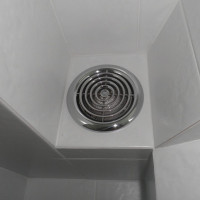 Connecting an exhaust fan in the bathroom and toilet: analysis of schemes and tips for installing equipment
Connecting an exhaust fan in the bathroom and toilet: analysis of schemes and tips for installing equipment 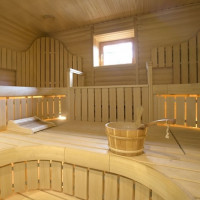 Ventilation in the steam room: examples of proven schemes and analysis of the rules of arrangement
Ventilation in the steam room: examples of proven schemes and analysis of the rules of arrangement 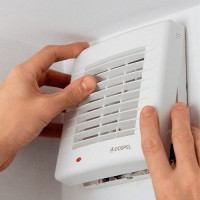 How to choose and install a fan in the bathroom + how to connect a fan to a switch
How to choose and install a fan in the bathroom + how to connect a fan to a switch 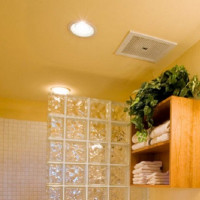 Ventilation in the bathroom in the ceiling: arrangement features + installation instructions for the fan
Ventilation in the bathroom in the ceiling: arrangement features + installation instructions for the fan  How to connect a kitchen hood to ventilation: a work guide
How to connect a kitchen hood to ventilation: a work guide 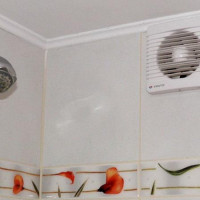 Is forced ventilation in the bathroom necessary: norms and stages of arranging efficient air exchange
Is forced ventilation in the bathroom necessary: norms and stages of arranging efficient air exchange  How much does it cost to connect gas to a private house: the price of organizing gas supply
How much does it cost to connect gas to a private house: the price of organizing gas supply  The best washing machines with dryer: model rating and customer tips
The best washing machines with dryer: model rating and customer tips  What is the color temperature of light and the nuances of choosing the temperature of the lamps to suit your needs
What is the color temperature of light and the nuances of choosing the temperature of the lamps to suit your needs  Replacement of a geyser in an apartment: replacement paperwork + basic norms and requirements
Replacement of a geyser in an apartment: replacement paperwork + basic norms and requirements